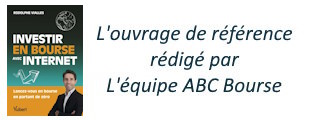Biogen explication
Cours temps réel: 1,884 -2,89%| Cours | Graphes | News | Analyses et conseils | Société | Historiques | Vie du titre | Secteur | Forum |
7 questions on Biogen's revival of a failed Alzheimer's drug
Jonathan Gardner
Published Oct. 22, 2019
POSTSHARETWEET
Biogen stunned investors and Alzheimer's researchers on Tuesday with news it will ask the Food and Drug Administration to approve its experimental drug aducanumab.
Just seven months ago, Biogen shut down two large Phase 3 studiesafter a first look at the data signaled the trials were unlikely to prove positive.
Yet the biotech kept collecting and analyzing results, leading to disclosure that aducanumab, in fact, succeeded in one of the two trials. While the other still missed its goal, Biogen says the fuller dataset provides compelling evidence aducanumab can lessen the functional and cognitive decline brought on by Alzheimer's.
Executives tried to defend that claim to skeptical Wall Street analysts on a Tuesday conference call. Much remains uncertain, foremost of which is whether the FDA will agree with Biogen's analysis.
SPONSORED BY SALESFORCE
How to drive patient and customer engagement more efficiently.Get the E-Book
Here are seven of the most pressing questions facing Biogen and its Alzheimer's hopes, some of which could be cleared up when the drugmaker presents fuller data at the Clinical Trials on Alzheimer's Disease conference in December. Others, however, will linger until the FDA weighs in.
What changed from Biogen's earlier analysis?
Biogen's explanation centers on the length of time patients were exposed to the higher dose of aducanumab tested in the two studies, called ENGAGE and EMERGE.
In March, when the company decided to discontinue the trials, there wasn't sufficient data to reveal the benefit of high-dose aducanumab over time, executives said.
That call was based on what's known as a futility analysis. In brief, company statisticians calculated the probability the studies would succeed based on data through Dec. 26, 2018. At that time, Biogen had results from 1,748 patients who had the opportunity to complete a full 18-month study period in either trial.
Running the numbers, the drugmaker concluded both dose arms in both trials had less than a 20% probability to meet the primary endpoint at a final analysis.
"In retrospect, the result of our futility analysis was incorrect," CEO Michel Vounatsos said on Tuesday's conference call. "Based on what we know now, it is clear that the prespecified futility criteria did not adequately anticipate the effect of all the variability in these trials."
Biogen now has results from 2,066 patients who had the opportunity to complete 18 months of study, as well as from all 3,285 enrolled into ENGAGE and EMERGE. Data also cover three more months of treatment, through March 20, 2019.
Two changes in study protocol made in July 2016 and March 2017 allowed more patients to reach the high 10 mg/kg dose that Biogen believes to be most effective. And because those study changes came, respectively, 10 months and 18 months after the trials began, patients enrolled early on and included in the futility analysis had less average exposure to aducanumab.
"These two protocol amendments were put in place precisely to enable more patients to reach high dose aducanumab and for a longer duration," said Al Sandrock, Biogen's chief medical officer and new head of R&D. "As a consequence, the larger data set available after trial cessation included more patients with sufficient exposure to high dose aducanumab."
One study failed. Could the success be a false positive?
In EMERGE, Biogen said treatment with high-dose aducanumab resulted in a 23% reduction in clinical decline versus placebo on a function and cognition test known as CDR-SB, the study's primary endpoint.
This both cleared the bar for statistical significance and surpassed the 20% mark executives argued is sufficient to be clinically meaningful to patients.
But in ENGAGE, a supposedly identical trial, patients on high-dose aducanumab saw no benefit as measured by CDR-SB.
For some analysts, that raised the question of whether EMERGE's success represents a false positive.
"When anybody says a p-value is <0.05, this means that there's less than a 5% chance the data is a fluke," wrote Mizuho's Salim Syed.
EMERGE had a p-value equal to 0.01 on CDR-SB, according to Biogen, "which is great and it means the odds of that trial having fluke data are really low," Syed added. "But again, ENGAGE did not have this same result … This is why the FDA typically requires two trials, to rule out a fluke."
As Biogen explains it, the discrepancy between ENGAGE and EMERGE comes down to the same reason why a second analysis resulted in a different outcome than in March.
"Differences between EMERGE and ENGAGE can mostly be accounted for by a greater level of exposure to high dose aducanumab in EMERGE due to multiple factors, including the fact that ENGAGE started earlier and enrolled earlier than EMERGE," said Sandrock.
However, ENGAGE only started one month before EMERGE and, in a comparison Biogen made among a subset of patients who had sufficient exposure to high-dose aducanumab, the difference in patient numbers between the two studies was only 30 participants.
"The EMERGE data are clearly positive but the ENGAGE data look definitively negative, and based on what we've seen (somewhat limited details) we feel unconfident that the ENGAGE subgroup salvages the overall narrative," wrote Paul Matteis of Stifel, an investment bank, in an Oct. 22 note to investors.
Steven Seedhouse of Raymond James went even further.
"We don't think this plan is going to work and assign 0% probability of success to aducanumab in Alzheimer's," he wrote.
|
Répondre
|
Forum de discussion Ab Science
201910261853 719654
